|
||||||||||
Saturday January 13, 2007 5:15 am Lethbridge Sunrise 8:24 Sunset 16:55 Hours of daylight: 8:31
A. Morning Musings
5:15 am It is -12 C at the moment with a high of -10 C forecast. The windchill temperature is -21 C.
Setting up a new page only takes about 5 minutes. It involves simply copying the previous day's page, modifying the "Previous Page" links at the top & bottom, obtaining the weather information from the Web, and deleting any notes or comments. I also have to add the "Next Page" links to the previous day's page as well as a link in the Journal Index to the new page. That pretty well does it. Everything else is detail as the day unfolds.
Now for my first cuppa.
B. Plan
Immediate Health Walk & exercise 1 hr Technology Begin reading "iPhoto" 1 hr Digital photography - learn about using the various manual settings 1 hr Model Trains Follow tutorial for 3rdPlanIt (Manual p. 3 - 24) 2 hr Literature Continue reading "Virginia Woolf: The Inner Life" by Julia Briggs 2 hr Read "Three Guineas" by Virginia Woolf. 1 hr Later Chores Investigate water softeners for home Technology Read manual for cell phone Make notes for chap. 4 of "Switching to the Mac" Mathematics Read "Fearless Symmetry" chap 9: Elliptic Curves Model Trains Add ground cover to oil refinery diorama Continue assembly of coaling tower Purchase DCC system History Read Watson "Ideas" Philosophy Read & make notes for "Breaking the Spell" GO Complete reading "Lessons in the Fundamentals of Go" Puzzles The Orange Puzzle Cube: puzzle #10
C. Actual/Note
Model Trains 08 January 13 |
|||
The first wrinkle is to learn how to switch between Mac OS X (which is where I create this web page) and Windows (which is where I use 3rd PlanIt). Here is a screen capture of my OS X screen:
Basically I have two windows open: the OS X (which contains my Dreamweaver creation of this page) and a winxp window (which contains the display for 3rd PlanIt). When in OS X, I simply click anywhere on the winxp window to switch to that environment. When in winxp, I need to press the ctl-alt to switch to OS X. To obtain a screen capture of a 3rd PlanIt display I must first be in OS X. Then I press cmd-shift-4 to activate the screen capture. I left-mouse-drag to select the area, which immediately creates a jpg file on the OS X desktop. I can then place this image on the Dreamweaver page by following the normal procedure for inserting an image. The following section numbers refer to the numbers in the 3rd PlanIt User's Manual. 2.1.2 Floating the ToolKit The ToolKit is initially located on the left side of the winxp window (you can see it in the above screen capture). By moving the cursor over the two lines at the top of the toolkit, one may drag it to any position on the screen. When one does this, it changes its shape:
As soon as one selects one of the tools, the ToolKit disappears (which is a good thing as it clutters up the work area). When one is finished using the tool, a right mouse click will bring back the ToolKit. This is really neat! 2.2 A Sectional Track Plan The goal for this section is to create a simple track layout using sectional track pieces. Select ToolKit -> Sectional Builder:
One can then select the particular the particular library one wants (in this case Track -> HO -> Atlas 100).
One then sees a display of all the items in this Library (i.e. all of the different track pieces made by Atlas for HO gauge 100).
Laying track is a snap. Simply click on the pieces of track and each click will result in that piece being attached to the previous piece. Here is a simple example of an oval layout.
Success! My first layout. 2.2.2 Viewing in 3D One can also view this layout in 3D. First, select all of the track objects. Then use the menu commands View -> 3D Origin and Camera -> Move 3D Origin To Center of Selection.
Slick! This will be more impressive when there is more to see. 2.2.3 Terrain Switch back to 2D by pressing the Tab key. Click Done on the Sectional Builder to close it. Here is the result of applying a rectangular mesh terrain:
Once this is created it is relatively easy to alter the elevation of the terrain by pulling up or pushing down. Here is the result:
2.2.4 Modifying the Design This will be my next session.
9:50 PM |
|||
Literature 07 January 13 |
|||||
|
|||||
D. Reflection



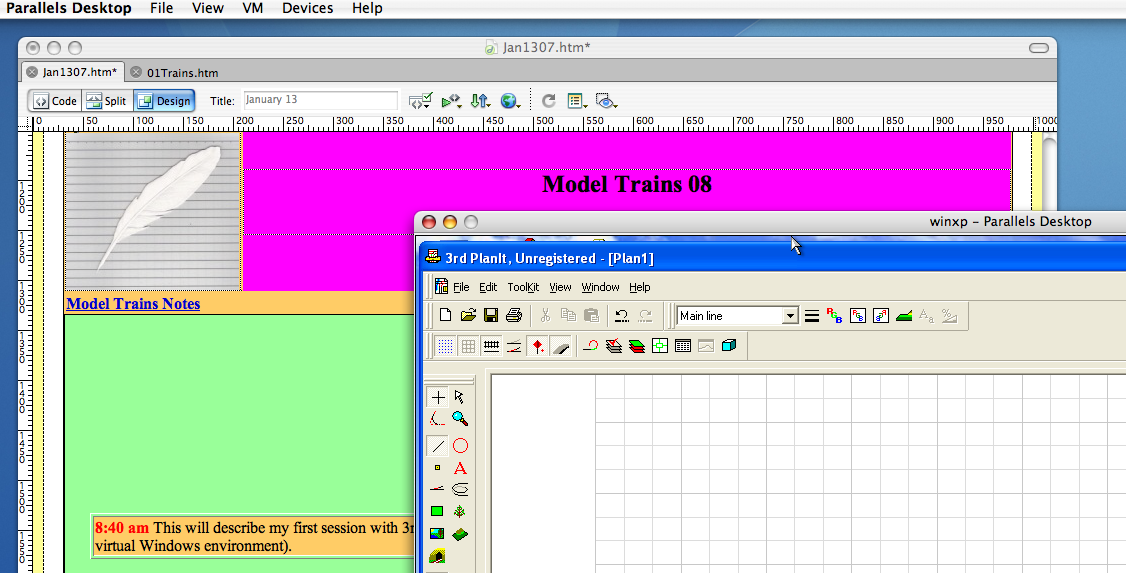
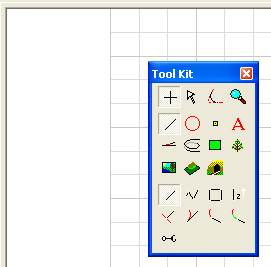

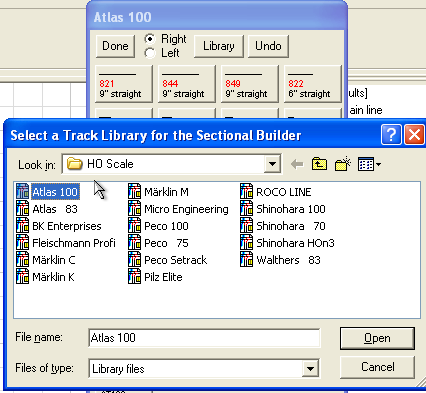
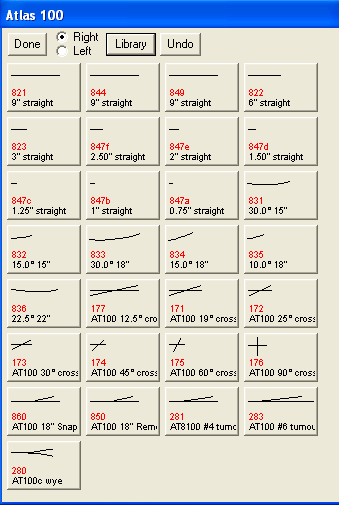
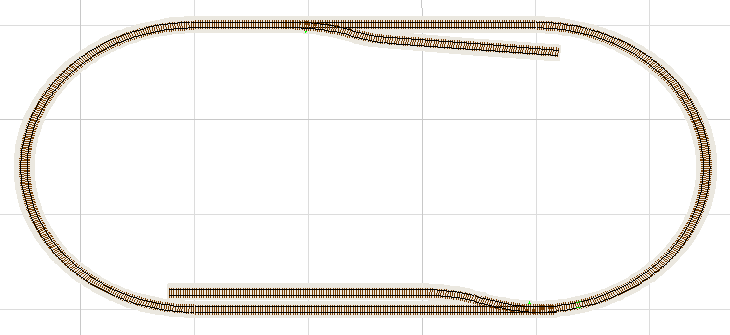
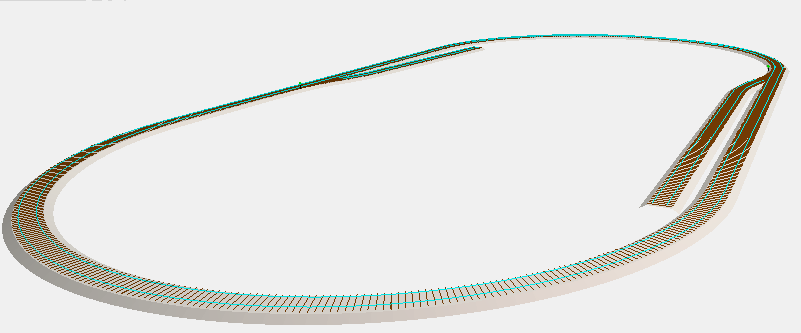
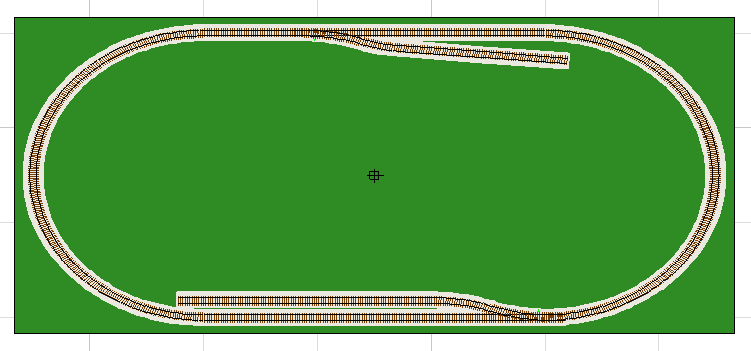
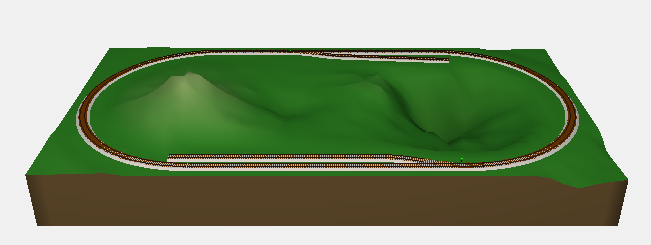
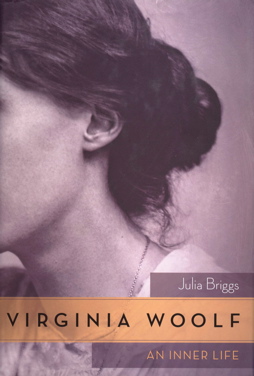 link to
link to